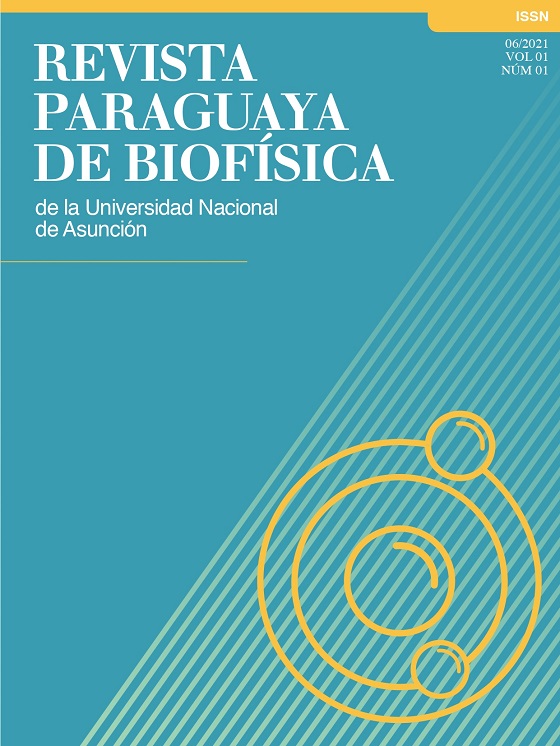Frecuencia de ametropías en estudiantes de medicina de la FCM-UNA y factores asociades
Palabras clave:
ametropía, estudiantesResumen
Introducción: La visión sana requiere tres procesos básicos: formación de imágenes en la retina, estimulación de conos y bas- tones y conducción de impulsos nerviosos. Las ametropías consisten en un enfoque inadecuado de la retina. Gran parte de la población mundial padece ametropía.
Objetivo: Determinar la frecuencia de ametropías en estudiantes de medicina de la FCM–UNA, 2018.
Metodología: Estudio observacional analítico transversal. Muestreo no probabilístico por conveniencia. Instrumentos: cuestionarios cerrados, variables de elaboración propia. Para el análisis de datos se utilizó Chi cuadrado y un valor de p menor a 0,05 como significativo.
Resultados: El 66,3% de la muestra presentó algún tipo de ametropía y el 43% de estos fueron diagnosticados en la adolescencia. La miopía simple fue dominante presentándose en 80,44% de los amétropes. El 99% de la muestra manifestó tener hábitos asociados a aparición de ametropías y el 82% tiene familiares con ametropías.
Discusión: Según los datos recabados, los factores asociados a aparición de ametropías (hábitos y antecedentes familiares) no aportan datos significativos que afirmen su asociación con el inicio de la patología. Sin embargo, podemos afirmar que la mayor parte de la población estudiada presenta ametropías de diversos tipos que podrían ser múltiples en un mismo individuo.
Descargas
Citas
(1) Hipermetropía: Qué es y cómo se corrige | Clínica Baviera [Internet]. Clinicabaviera.com. 2018 [cited 7 November 2018]. Available from: https:// www.clinicabaviera.com/refractiva-hipermetropia
(2) Eguía Martínez F, Río Torres M, Capote Cabrera A, Ríos Caso R, Hernández Silva JR, Gómez Cabrera CG, et al. Cirugía refractaria. En: Manual de diagnóstico y tratamiento en oftalmología. La Habana: Editorial Ciencias Médicas; 2009.
(3) Al Bahhawi T, Makeen A, Daghreeri H, Tobaigy M, Adawi A, Guhal F et al. Refractive Error among Male Primary School Students in Jazan, Saudi Arabia: Prevalence and Associated Factors. The Open Ophthalmology Journal. 2018;12(1):264-272.
(4) Lapido Polanco SI, Baldoquin Rodríguez W, López González M. La miopía degenerativa desde una perspectiva social. Rev Cubana Oftalmol. 2014 [citado 27 Jul 2014];27(3):455-70.
(5) Jiang Y, Tian B. Understanding Modifiable Risk Factors for the Develop- ment of Myopia. Ophthalmology. 2018;.
(6) Wolfram C. Epidemiologie von Refraktionsfehlern. Der Ophthalmologe [Internet]. 2017 [cited 8 November 2018];114(7):673-682.
(7) Jones-Jordan L, Sinnott L, Manny R, Cotter S, Kleinstein R, Mutti D et al. Early Childhood Refractive Error and Parental History of Myopia as Predictors of Myopia. Investigative Opthalmology & Visual Science.
Descargas
Publicado
Cómo citar
Número
Sección
Licencia
Derechos de autor 2021 Mileena Cardozo, Luis Cardozo, Mariam Castello, Rebeca Chaparro, Ana Cho, Ángel Cristaldo, Lucia Cuellar, Luz Dacak, Giuliana Delgado, Milena Díaz

Esta obra está bajo una licencia internacional Creative Commons Atribución 4.0.





